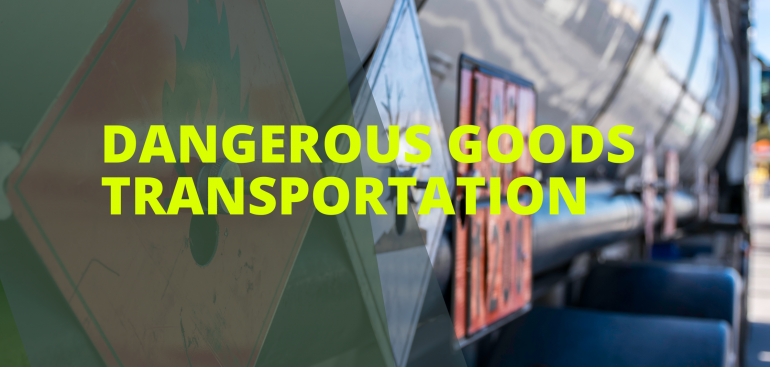Transportation of dangerous goods is a crucial aspect of modern commerce, as it allows companies to move hazardous materials safely and efficiently. However, transporting dangerous goods comes with many risks, and safety must be a top priority. In this article, we will explore the dangers of transporting hazardous materials and discuss best practices for ensuring the safe transportation of dangerous goods.
Outline:
- Overview of Dangerous Goods Transportation
- Hazards of Dangerous Goods Transportation
- Regulations for Dangerous Goods Transportation
- Best Practices for Safe Transportation of Dangerous Goods
- Challenges in Dangerous Goods Transportation
Overview of Dangerous Goods Transportation
Dangerous goods refer to any substance that has the potential to cause harm to people, property, or the environment. These goods are typically categorized based on their properties, such as flammability, toxicity, or corrosiveness. Examples of DG include explosives, flammable gases and liquids, toxic substances, and radioactive materials.
Transporting dangerous goods is necessary for many industries, including manufacturing, construction, and healthcare. However, it also comes with significant risks. Improper handling or transportation of DG can result in explosions, fires, spills, and other dangerous incidents.
Hazards of Dangerous Goods Transportation
The hazards of transporting DG are numerous and significant. The most obvious risk is to human health and safety. Exposure to dangerous goods can cause burns, respiratory problems, and other serious injuries. In some cases, exposure can even be fatal.
There are also environmental risks associated with transporting DG. Spills or leaks of hazardous materials can contaminate water supplies, harm wildlife, and damage ecosystems. In addition, fires or explosions resulting from the transportation of dangerous goods can cause air pollution and other environmental problems.
Finally, there are risks to property and infrastructure. Explosions or fires caused by dangerous goods transportation can damage buildings, roads, and other infrastructure. This can result in significant financial losses for businesses and governments.
Regulations for Dangerous Goods Transportation
Given the risks associated with transporting dangerous goods, there are numerous regulations in place to ensure the safe handling and transportation of these materials. These regulations can be international, national, or industry-specific.
International regulations for dangerous goods transportation are established by the United Nations and are known as the UN Model Regulations. These regulations provide guidance on the classification, packaging, labeling, and transport of DG.
National regulations for dangerous goods transportation can vary depending on the country. In the United States, for example, the Department of Transportation has established the Hazardous Materials Regulations (HMR) to govern the transportation of DG.
In addition, many industries have specific regulations governing the transportation of dangerous goods. For example, the International Air Transport Association (IATA) has established regulations for the transport of dangerous goods by air.
Best Practices for Safe Transportation of Dangerous Goods
To ensure the safe transportation of dangerous goods, there are several best practices that companies should follow. First and foremost, proper packaging and labeling of dangerous goods is essential. This includes using appropriate containers and labeling them with the correct hazard information.
In addition, personnel involved in the transportation of DG should be properly trained and certified. This includes training on the specific properties of the dangerous goods being transported, as well as training on emergency response procedures.
Choosing a reputable transportation company is also important. Companies should research potential transporters and ensure they have a track record of safely handling dangerous goods.
Proper documentation and record-keeping are also critical. This includes maintaining accurate and up-to-date shipping documents, as well as keeping records of any incidents or accidents that occur during transport.
Finally, companies should have emergency response plans in place in case of accidents or spills. This includes having proper equipment and personnel trained to respond to emergencies, as well as having communication plans in place to quickly notify authorities and other stakeholders.
Challenges in Dangerous Goods Transportation
Despite the numerous regulations and best practices in place, there are still several challenges associated with the transportation of dangerous goods. One challenge is the changing regulatory landscape. Regulations governing the transport of dangerous goods can vary by country and can change frequently, making it difficult for companies to stay compliant.
Security concerns are also a challenge in the transportation of DG. The potential for dangerous goods to be used in terrorist activities has led to increased security measures, which can add complexity and cost to the transportation process.
Transportation infrastructure limitations can also be a challenge. For example, some roads or bridges may not be able to support the weight of certain types of dangerous goods, or may not have appropriate emergency response resources nearby.
Conclusion
The transportation of dangerous goods is essential for many industries, but it comes with significant risks. It is crucial that companies prioritize safety and take appropriate measures to ensure the safe handling and transport of dangerous goods.

